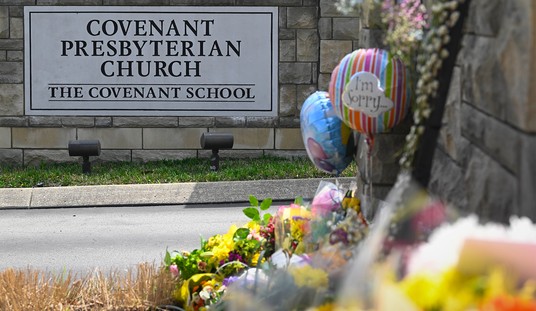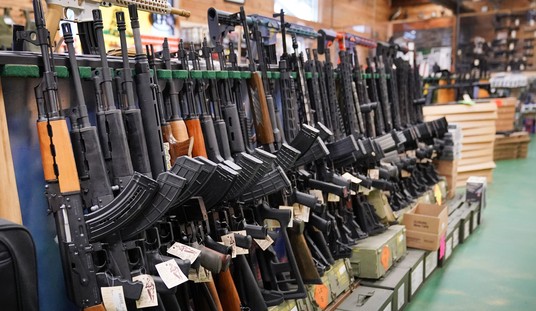With the Supreme Court confirmation hearings for Judge Amy Coney Barrett set to begin in less than two weeks, the organized opposition on the Left is doing everything they can to portray her as some sort of black-robed extremist who would plunge the United States into a new Dark Age with her judicial philosophy and religious beliefs. The latest example of this comes from the Michael Bloomberg-funded anti-gun outlet known as The Trace, which unveiled a new attack on Barrett this week claiming that her judicial philosophy leaves “little room for public safety.”
The first problem with The Trace‘s reporting is the fact that they mislead their readers by confusing “public safety” with “gun control.” There are plenty of gun control laws on the books that have no impact on public safety, but do impact the Second Amendment rights of American citizens, and the country wouldn’t be a more dangerous place if those gun control laws were to be declared unconstitutional.
The piece itself focuses on Barrett’s use of what’s called the “history and tradition” approach to determining the constitutionality of gun control laws. As The Trace describes the judicial philosophy:
This “text, history, and tradition” test calls on courts to ask only one question: Is there some kind of historical precedent for a current gun law? If the answer is yes, then the court should uphold the gun regulation as constitutional. If the answer is no, then the court must strike down the gun regulation. This could potentially invalidate even politically popular regulations like strict permit requirements for public carry and bans on high-capacity magazines. And you can see how it might get difficult very quickly: We don’t allow guns on airplanes, but there couldn’t have been an airplane gun-ban in the 18th century because there were no airplanes.
This is a silly example. We don’t have government-run airlines, so the private companies that own and run those airlines can put whatever policies they want in place, even if a government-imposed restriction on transporting firearms while flying were to be overturned by SCOTUS. As it is, we actually do allow guns on planes, though they must be stored unloaded in locked and checked baggage. As for striking down things like showing a “justifiable need” to carry a firearm or banning magazines that can hold more than ten rounds, courts have already struck down those laws as unconstitutional, even without Barrett on the bench.
One of the first high-profile evocations of the history and tradition test came from Justice Brett Kavanaugh, Trump’s last appointee to the high court. When he was a judge for the D.C. Circuit, he wrote a dissent in a case on Washington’s ban on semiautomatic rifles, calling on courts to stop considering modern public safety concerns in their Second Amendment analyses. He wrote, “In my view, Heller and McDonald leave little doubt that courts are to assess gun bans and regulations based on text, history, and tradition, not by a balancing test.” Kavanaugh went on to conclude that, because laws have allowed civilians to own semiautomatic rifles since the early 20th century, they should be protected by the Second Amendment today.
That’s a gross misreading of Kavanaugh’s dissent in the case known as Heller II. Kavanaugh did say that a balancing test was inappropriate in determining the constitutionality of gun laws, but he also pointed out that under the “history and tradition” test many gun control laws would remain constitutionally valid. From his dissent:
First, just because gun regulations are assessed by reference to history and tradition does not mean that governments lack flexibility or power to enact gun regulations. Indeed, governments appear to have more flexibility and power to impose gun regulations under a test based on text, history, and tradition than they would under strict scrutiny. After all, history and tradition show that a variety of gun regulations have co-existed with the Second Amendment right and are consistent with that right, as the Court said in Heller. By contrast, if courts applied strict scrutiny, then presumably very few gun regulations would be upheld. Indeed, Justice Breyer made this point in his dissent in Heller when he noted that the majority opinion had listed certain permissible gun regulations “whose constitutionality under a strict-scrutiny standard would be far from clear.”
So the major difference between applying the Heller history- and tradition-based approach and applying one of the forms of scrutiny is not necessarily the number of gun regulations that will pass muster. Instead, it is that the Heller test will be more determinate and “much less subjective” because “it depends upon a body of evidence susceptible of reasoned analysis rather than a variety of vague ethico-political First Principles whose combined conclusion can be found to point in any direction the judges favor.”
The Trace desperately tries to make the “history and tradition” test some sort of legal bogeyman, when in fact Kavanaugh makes it clear that the test actually removes some of the subjectivity on the part of judges in determining whether a gun control law passes constitutional muster. The real problem for gun control advocates is that they keep pushing for laws that plainly violate the right to keep and bear arms under both the “history and balancing” test or strict scrutiny. Their only hope is for judges to determine that the Second Amendment always takes a back seat to a claim of public safety, no matter how weak or non-existent the evidence is that the gun control law in question actually has any benefit to public safety at all.
Amy Coney Barrett used the history and tradition test in the case of Kanter vs. Barr, when she wrote in a dissenting opinion that non-violent felony offenses shouldn’t automatically come with a lifetime prohibition on the right to keep and bear arms because the Founders were concerned about prohibiting “dangerous” people from owning a gun, not just imposing a blanket prohibition on gun ownership for those convicted of a felony offense.
It’s clear that the “history and tradition” test that The Trace says would leave little room for public safety actually leaves room for “long-standing” gun control laws. The test simply doesn’t allow for novel gun control schemes that infringe on the right to keep and bear arms while offering vague promises of some potential public safety benefit. The real reason The Trace and gun control groups are so terrified of the possibility of Barrett on the bench at the Supreme Court has less to do with her judicial philosophy and far more to do with the fact that she accepts that the Second Amendment isn’t a second-class right.









Join the conversation as a VIP Member